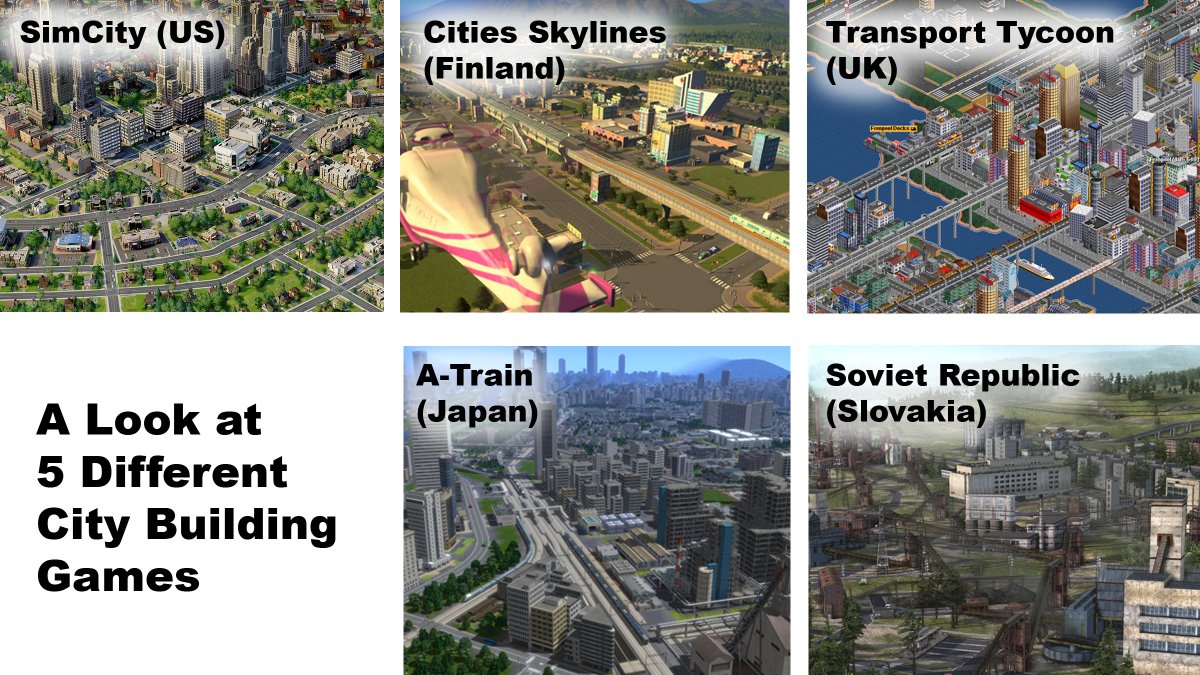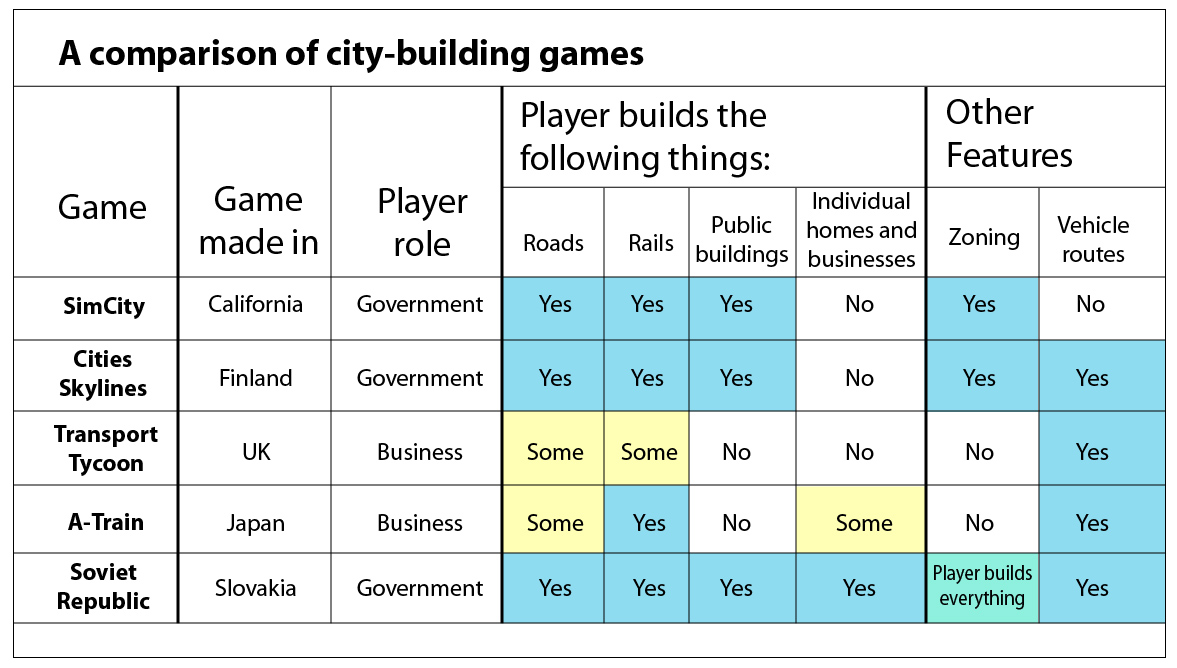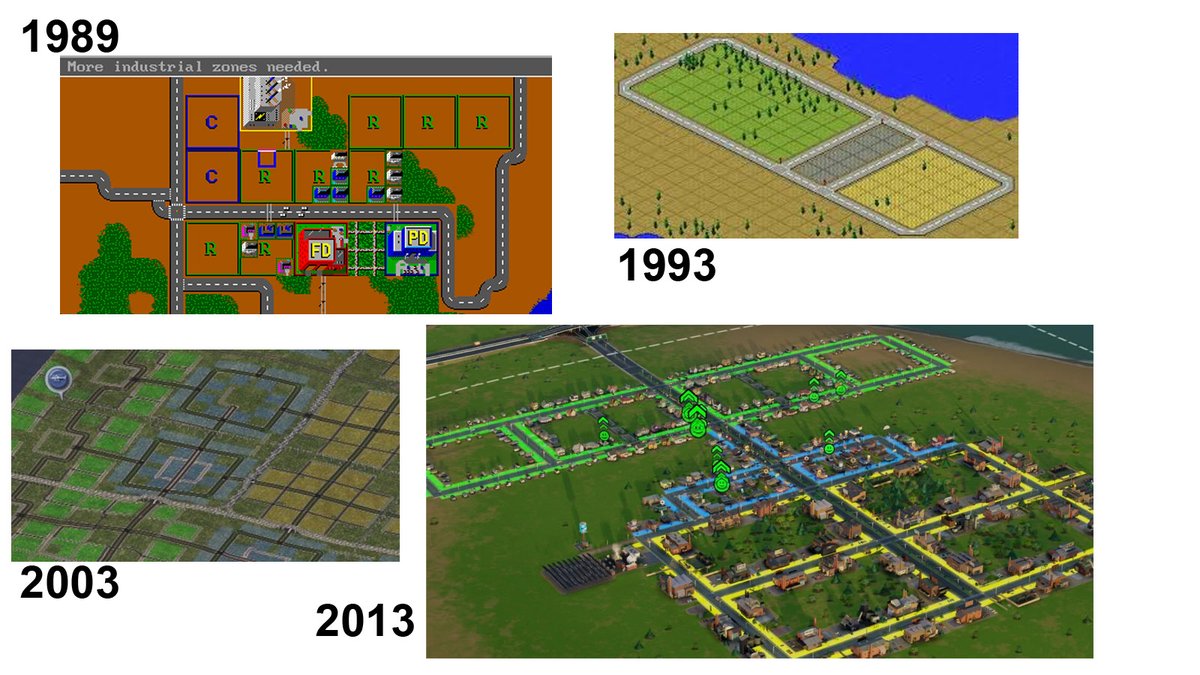
A thread on Missing Small Housing! Stuff smaller than a house, but bigger than a tent.
The housing crisis isn't just a big city problem. Rural areas also don't have enough homes - for example, California's Imperial County has one of the highest rates of overcrowded homes. 1/
The housing crisis isn't just a big city problem. Rural areas also don't have enough homes - for example, California's Imperial County has one of the highest rates of overcrowded homes. 1/

The causes of the rural housing crisis are similar to the cities: restrictive zoning, low wages, and homebuilding not keeping up with job growth.
Missing Small Housing can also be used in cities and suburbs to provide cheap housing on leftover bits of land. 2/
Missing Small Housing can also be used in cities and suburbs to provide cheap housing on leftover bits of land. 2/

Accessory Dwelling Units & Junior Accessory Dwelling Units:
Accessory dwelling units (ADU's) became popular in California in the late 2010s as local and state laws were changed to allow more homes to be added without changing the appearance of a neighborhood.
3/
Accessory dwelling units (ADU's) became popular in California in the late 2010s as local and state laws were changed to allow more homes to be added without changing the appearance of a neighborhood.
3/

Unlike a regular duplex or triplex, the additional ADU homes are limited in size (often no larger than a modest 2-bedroom home), & can't be sold separately. Here's an explainer from @carla_org carlaef.org/adus/ 4/
Some cities have additional restrictions, for example, limiting ADUs to a single story, or requiring they be designed to match the house. 5/
Also known as in-law units as they're sometimes for a relative, in practice ADU's house all sorts of people. Some homeowners move into the ADU & rent out the main house. This is popular with retirees who want the income from rent & a new, fully accessible home without stairs. 6/
Recently, cities such as San Jose and Los Angeles have pre-approved ADU plans that any homeowner can use. Here's @CityofSanJose's list of preapproved Accessory Dwelling Units: sanjoseca.gov/business/devel… 7/
Los Angeles also recently released a series of preapproved Accessory Dwelling Unit designs. See them here: ladbs.org/adu/standard-p…
https://twitter.com/MayorOfLA/status/13679105391547801618/
As families typically have more than one set of in-laws, and many lots are large, in 2019, CA started allowing a 2nd ADU, known as a Junior ADU. Difference between regular vs junior ADU: a JADU has to be mostly converted from existing space, while regular can be a new bldg. 9/
Boardinghouses were common in the US from the 1800s until the 1950s, & were a popular first stop for people moving from farm to city. Ranging from a single room rented out by a homeowner up through converted mansions & purpose-built residential hotels en.wikipedia.org/wiki/Boarding_… 10/
They offered cheap housing and food (food prep used to a larger part of people’s budget and time). Boardinghouses were also a common business for women living independently to run. 11/ 

The difference between a boarding house and a rooming house is that a boarding house provides food (room & board) while a rooming house does not. 12/
Pressure from religious orgs & “reformers”, coupled with decline in city population due to suburbs, led to decline in boarding houses. Some still exist, incl home shares, shared rentals where landlord lives elsewhere (such as co-living), communes, etc. en.wikipedia.org/wiki/Co-living 13/
In some cities, larger rooming houses are banned, for example, Boulder, Colorado bans more than 3 unrelated people from living together. Recently, the Bedrooms are for People movement @BoulderBedrooms has been working to repeal that law. bedroomsareforpeople.com 14/
Small Lot Subdivisions
Why should someone need to buy 6,000 square feet of land if they only want 1,000 square feet of house?
That's why small lot subdivisions were reinvented. 15/
Why should someone need to buy 6,000 square feet of land if they only want 1,000 square feet of house?
That's why small lot subdivisions were reinvented. 15/

Lots in the US are big. In LA, a typical lot is 7,500 square feet (50'x150') while in outer suburbs, half acre lots (21,780 square feet) are common. Even cities such as San Francisco, where houses are built right up to the property line, have lots that are 2,500 sq ft. 16/
Given that a 3-bedroom home has just 1,200 square feet of building, there’s room for more than one home on a 7,500 sq ft lot. Multi-unit buildings are one option, however, many prefer to own a house rather than a condo. Separate houses are also cheaper to build & finance. 17/
Enter LA’s Small Lot Subdivision ordinance. Passed in 2005, it allows lots to be divided into multiple lots as small as 600 square feet. Here's an overview from @AbundantHousing abundanthousingla.org/small-lot-subd… 18/
Other cities have followed. From 2010 to 2018, Denver's zoning code allowed rows of townhouses on a lot, known locally as slot homes. denvergov.org/content/denver… 19/
One drawback of slot homes is that because most lots are long and narrow, the result is that the buildings face sideways. This means that from the street, one sees a bunch of dead-end driveways and side walls. This led to Denver banning them in 2018. denverpost.com/2018/05/07/den… 20/
But perhaps the problem with slot homes is that we’ve been doing this piecemeal. Continue the slot through the backyard and to the other side of the block, and the dead-end driveway becomes a street that all the homes face onto. 21/ 

So named because they stick out like a nail, nail houses are small bldgs. where owner refuses to sell to make way for a large project. Many sell once offered more cash. But some stick around because it turned out that land wasn’t absolutely necessary. en.wikipedia.org/wiki/Holdout_(… 22/
Here's an example of a nail house in China, where a building was left next to a park outside a train station. 23/ 

Modern development leave behind lots of leftover odd strips of land. Without enough flat area for a conventional house, they end up being useless landscaping that costs money to maintain, but has no recreational value. This would be a great spot for new small-lot homes. 24/ 

While the USSR went with concrete panel apartments for mass producing housing after World War 2, the USA, with better roads, went with the mobile home. Mass produced in indoor factories, manufactured housing could be built cheaper and better than homes built on site outdoors. 25/ 

While early mobile homes were narrow and cramped, construction of the interstates & other widening made possible bldgs 14 feet or wider — wide enough to have a hallway & a bedroom. Later on, double wide & triple wides created homes equal in size and shape to regular housing. 26/ 

At their peak in the mid-1970s, manufactured homes made up more than 1 in 4 new homes, and almost the entire starter home market. However, NIMBYism and fewer financing options led to a decline in manufactured housing sales. slate.com/news-and-polit… 27/
Still, even today, there are over 8 million mobile homes in the USA — one out of every 17 homes, housing more families than all large 50+ unit buildings. census.gov/programs-surve… 28/
Some mobile homes are located in purpose built mobile home parks, which with their narrow streets and smaller yards, are more land efficient than regular suburban subdivisions. 29/ 

One affordability problem with mobile or manufactured housing is where residents have to rent the land their home sits on, putting them at risk of rent increases, and making it hard to build up home equity that can be used to trade up to other housing. 30/
In the late 2000s, mobile home residents in New Hampshire led reforms to create resident-owned communities, where the homeowners own the land, and are now able to get low cost federally-backed mortgages. thehomestory.com/new-hampshire-… 31/
CA has a special type of mobile home park known as the Polanco park. It's common in SoCal farmworker communities in Riverside and Imperial counties.
https://twitter.com/alfred_twu/status/125903262171715584032/
In 1992, assemblymember Richard Polanco wrote AB3526, the Farm Labor Housing Protection Act. Known as the Polanco Bill, it allowed employee housing with up to 12 homes to be built on farms. While few farmers did, entrepreneurs & farmworkers used it to build polancos. 33/
While Polanco Bill mobile home parks provided low-cost housing, some polancos were built without adequate utilities, causing problems such as sewage backups or undrinkable water. psmag.com/environment/wa… 34/
After a series of electrocutions & fires, Riverside County tried to shut down the polancos. Residents and activists fought back to save their homes, some were able to convince the government to provide funds to pay for proper water & power connections. ruralhome.org/storage/docume… 35/
In 2020, Assemblymember Eduardo Garcia introduced AB2778, a bill to allow polancos to expand from 12 to 50 homes, creating scale economies for utilities. It got put on hold due to the pandemic. Similar legislation in the future could help rural CA. leginfo.legislature.ca.gov/faces/billText… 36/
Like regular manufactured housing, tiny houses are built on a trailer chassis and can be moved over roads. The size of a studio apartment or a small one-bedroom, they are shorter than a regular mobilehome — 20–30 feet long, instead of the 40+ feet. en.wikipedia.org/wiki/Tiny-hous… 37/
This makes is possible for them to fit on lots that already have a house. Fresno, California was one of the first cities to permit tiny houses to be placed on single-family lots in 2016. fresno.gov/darm/wp-conten… 38/
The next major city to follow was San Jose, CA in 2020. The San Jose ordinance allows tiny houses up to 400 square feet. sanjoseca.gov/Home/ShowDocum… 39/
In 2021, Portland, Oregon is also considering a large scale tiny house legalization. Portland’s proposal would also allow groups of tiny houses, where residents share outdoor space and other facilities. More info from @PNWelcome at portlandneighborswelcome.org/sheltertohousi… 40/
Another advantage of tiny houses vs. regular manufactured housing is that their small size makes it easier to move one — a regular trailer hitch and vehicle is all that’s needed. 41/ 

Invented by nomadic people in Central Asia, yurts are portable structures with fabric over a wood frame. They can be assembled in a matter of hours. en.wikipedia.org/wiki/Yurt 42/ 

While designed for mobility, yurts can also be used in permanent locations. In Ulaanbaatar, Mongolia, over half the population lives in ger districts. In addition to homes, these districts also have bathhouses, public toilets, & other shared amenities. en.wikipedia.org/wiki/Ger_distr… 43/ 

Recently, a modern take on the yurt has been invented — the Hexayurt. Like the original, they are designed to be portable and fold flat for easy transport. Heaxyurts are made using foam insulation panels. appropedia.org/Hexayurt_playa 44/ 



One housing shortage cause is regular homes used for short-term rentals. To redirect vacation rentals to a separate building type, in 2018 Berkeley legalized accessory buildings, allowing homeowners to add a guestroom with a bath but no kitchen. codepublishing.com/CA/Berkeley/ht… 45/
In Berkeley, Accessory Buildings (no kitchen) designed for short term rentals are allowed in addition to the Accessory Dwelling Units (which have full kitchens and are intended for permanent residents) that a house can have. 46/
Where most people live in apartments, cottages are popular vacation homes. People will have an apartment close to work, & a cottage outside of town. This lets city dwellers to have yards, without having rush hour traffic & the highways needed for it. en.wikipedia.org/wiki/Dacha 47/
In Western countries, RV parks have a similar role as dachas as a low cost rural home for city dwellers. There are also people who “fulltime” in RVs, living in them year round, sometimes moving from city to city for work or recreation. 49/ 

Opposition to missing small housing is typically anti-poor NIMBYism, using excuses such as traffic or utility capacity. However, working class residents are less likely to have 9–5 commutes & new energy/water efficiency standards mean that utilities can support more people. 50/
In places not yet connected to the electric or water grids, clustered villages of Small Housing along existing roads and utility lines can keep new infrastructure costs low while also reducing the impact on farmland or the environment. 51/ 

That's all for this one! Meanwhile, for those who like to go big, here's the earlier thread on Missing Large Housing.
https://twitter.com/alfred_twu/status/136919004063127142652/ end/
Same info on Missing Small Housing, now in a convenient article format as well: alfredtwu.medium.com/missing-small-…
• • •
Missing some Tweet in this thread? You can try to
force a refresh













